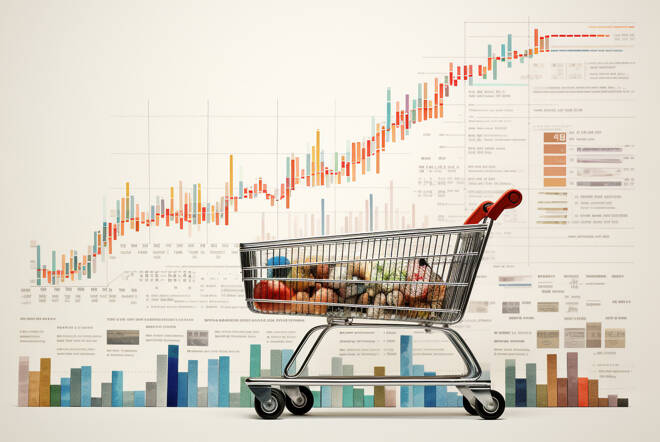Advertisement
Advertisement
Euro Area Grapples with Rising Consumer Inflation, Falling Producer Prices
By:
Euro area faces rising 2.9% inflation and falling industrial prices, highlighting a complex economic landscape.
Key Points
- Euro area inflation rises to 2.9% in December.
- November sees decline in industrial producer prices.
- Mixed signals emerge in Euro area economy.
Inflation Trends in the Euro Area
As the year closes, the euro area faces an uptick in inflation, with December 2023 figures expected to reach 2.9%, a rise from November’s 2.4%, according to Eurostat’s latest flash estimate.
This increase is attributed to varying price movements across major sectors. Food, alcohol, and tobacco lead with the highest annual rate, albeit showing a slight decrease from November. Service charges maintain a steady rate, while non-energy industrial goods and energy exhibit contrasting trends, with energy prices decreasing less sharply than in the previous month.
Industrial Producer Price Dynamics
In contrast to inflation, November 2023 marked a downturn in industrial producer prices, decreasing by 0.3% in the euro area and 0.2% in the EU compared to October. This reversal from October’s increase signifies a considerable year-on-year decrease, with the euro area witnessing an 8.8% drop, and the EU, an 8.1% decrease. These figures highlight a significant easing in industrial cost pressures, potentially impacting manufacturing and export competitiveness.
Detailed Sectoral Price Movements
A closer look at industrial sectors reveals nuanced price movements. Energy prices, often volatile, recorded the most significant drop, followed by intermediate goods. Capital goods and durable consumer goods experienced marginal decreases, while non-durable consumer goods prices remained stable. The overall industry, excluding energy, saw a slight decrease, indicating a general but controlled deflationary trend in industrial products.
Interpreting the Economic Signals
The juxtaposition of rising consumer inflation and falling industrial producer prices presents a complex economic landscape. On one hand, the increase in inflation points to sustained consumer demand and pricing power in certain sectors, notably food and services. On the other hand, the decline in industrial prices could reflect subdued raw material costs or weaker industrial demand, potentially signaling broader economic challenges.
Short-Term Economic Outlook
The current economic indicators paint a picture of mixed signals. Inflation’s upward trend might prompt cautious monetary policy responses, possibly affecting interest rates and liquidity measures. Conversely, the decline in industrial producer prices could offer some relief to manufacturers, possibly encouraging investment and production.
The short-term economic outlook for the euro area thus remains cautiously optimistic but closely monitored, with European Central Bank (ECB) policymakers and investors balancing inflation concerns against industrial and economic growth prospects.
Policy and Market Implications
These developments are critical for both policymakers and market participants. Inflationary trends will influence monetary policy decisions, possibly affecting borrowing costs and consumer spending.
Simultaneously, changes in industrial producer prices could impact trade balances, manufacturing sector health, and overall economic growth.
The euro area’s economic trajectory in the coming months will depend significantly on how these contrasting indicators are interpreted and managed by the European Central Bank (ECB) and other relevant authorities.
About the Author
James Hyerczykauthor
James Hyerczyk is a U.S. based seasoned technical analyst and educator with over 40 years of experience in market analysis and trading, specializing in chart patterns and price movement. He is the author of two books on technical analysis and has a background in both futures and stock markets.
Did you find this article useful?
Latest news and analysis
Advertisement
